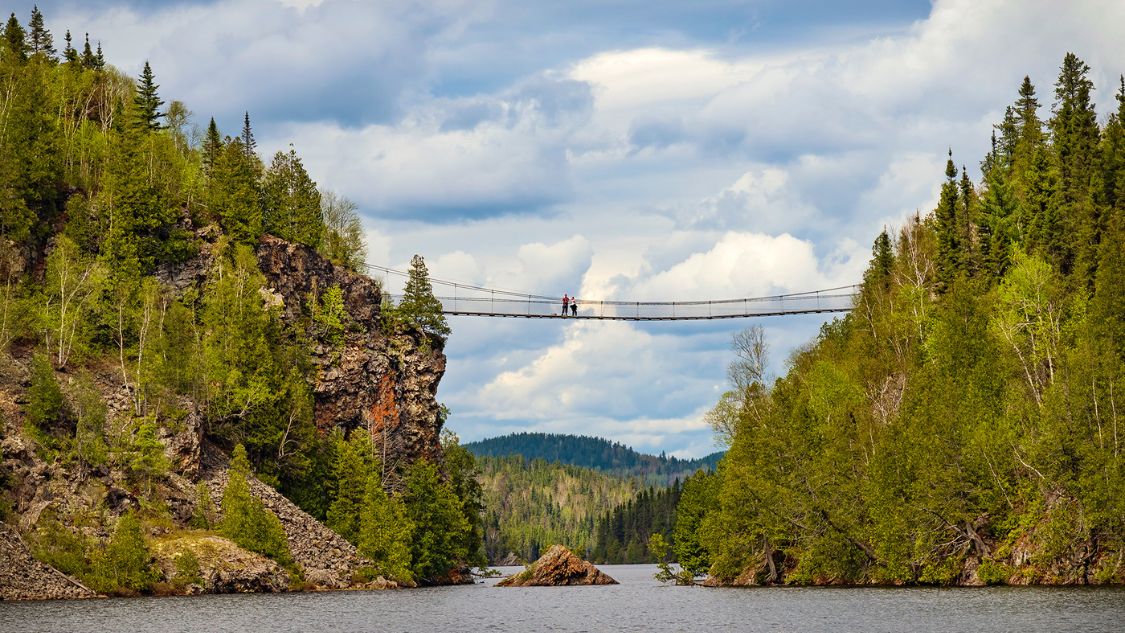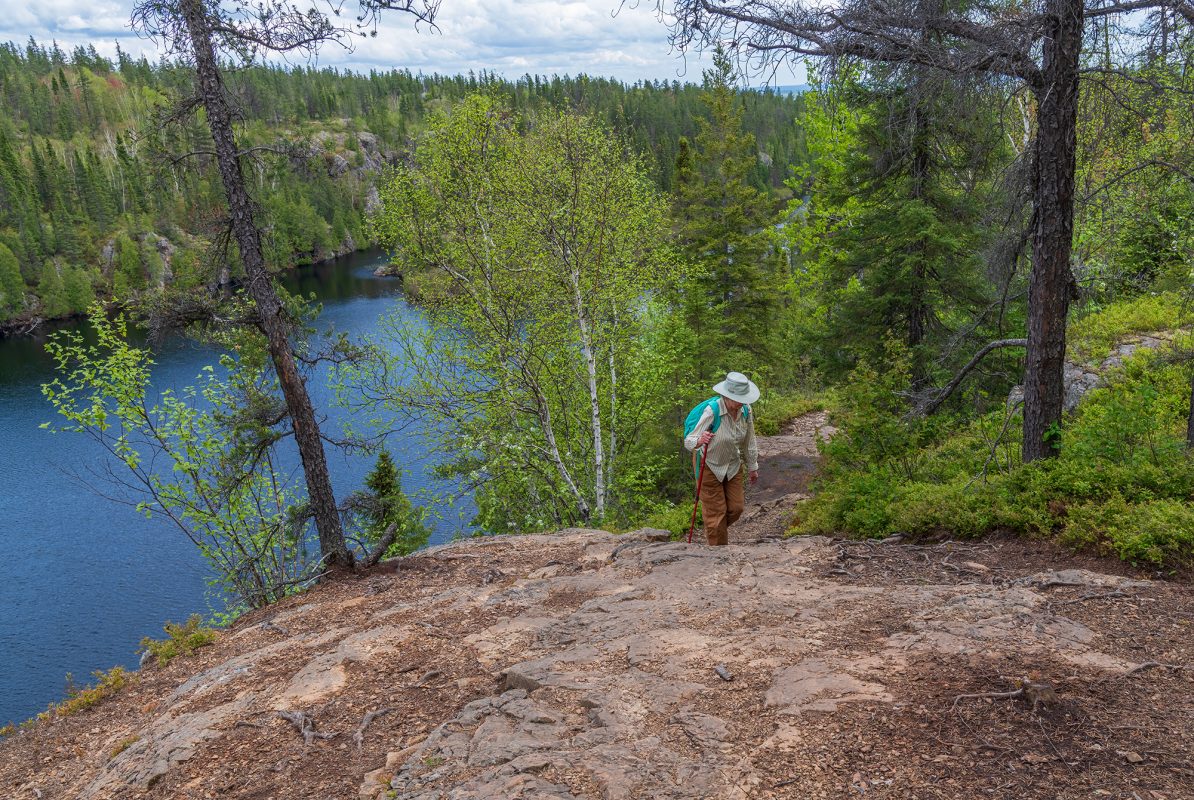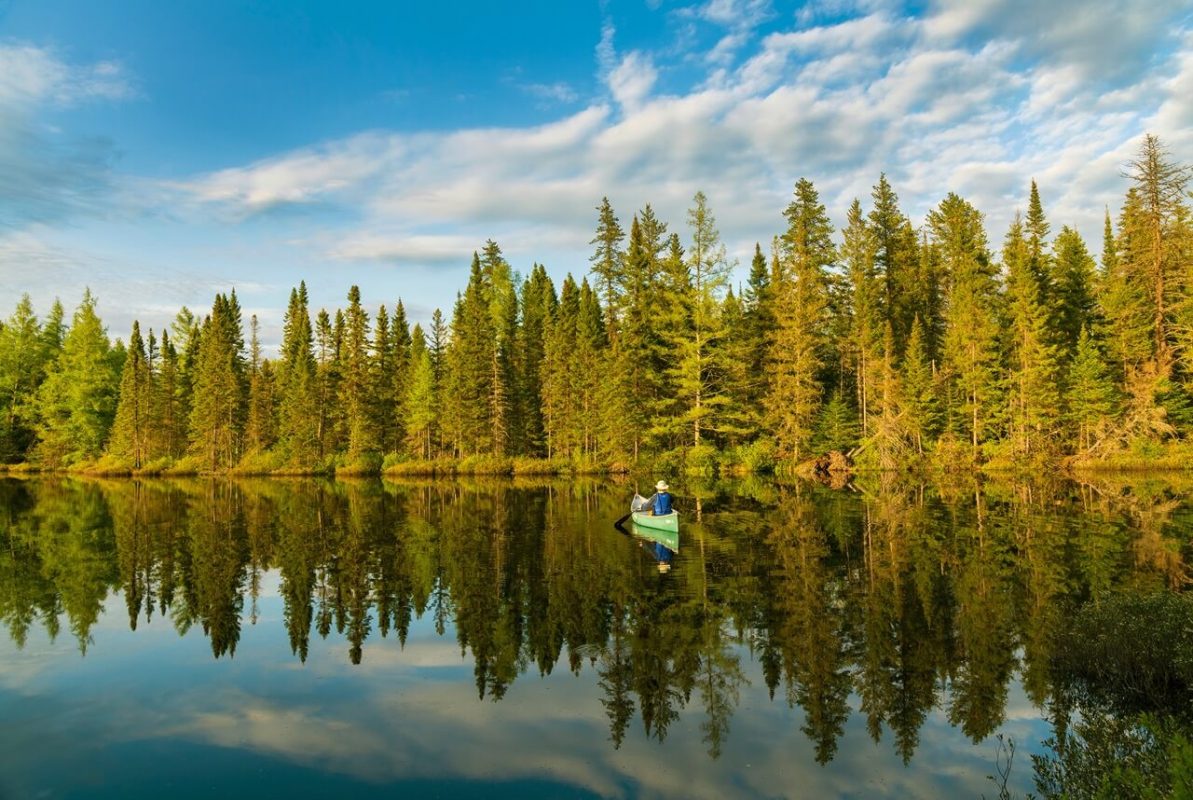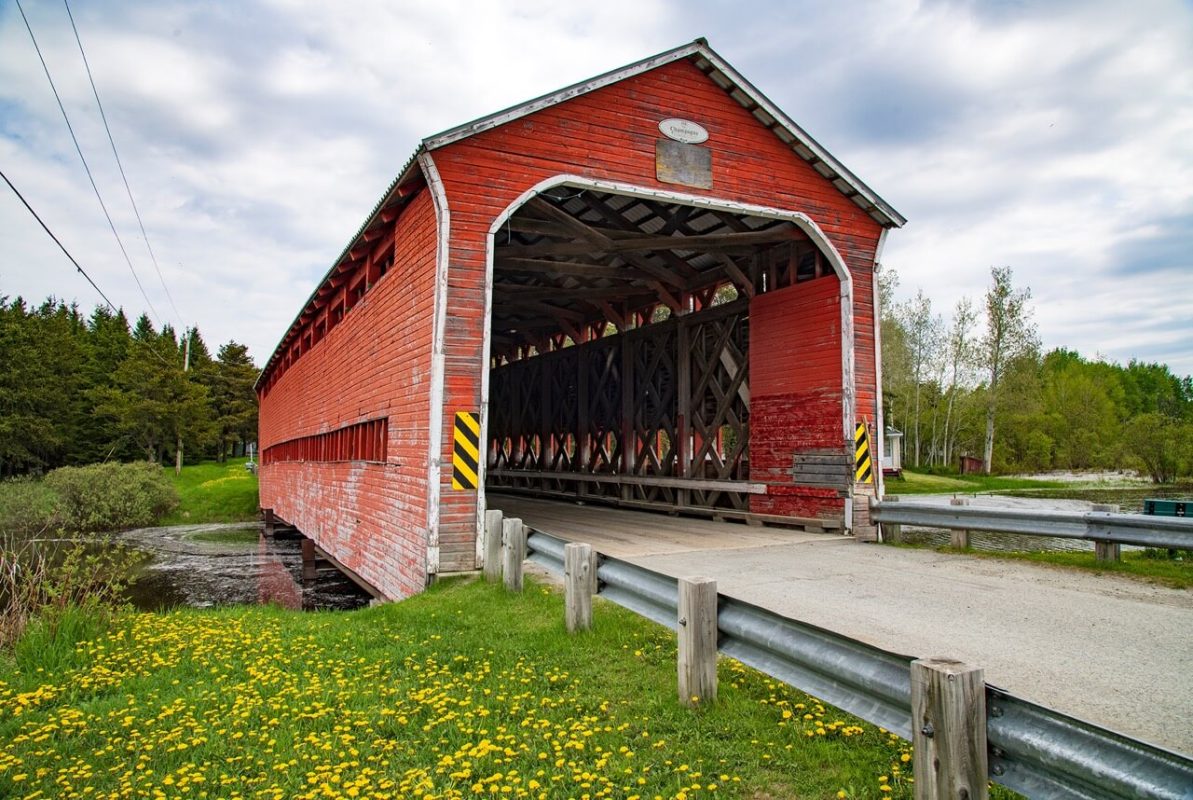Visiting Parc National d’Aiguebelle is a way to form a connection with the precious clay belt of the the Abitibi-Témiscamingue region and the Abijévis hills. And, as contributors Robin and Arlene Karpan note, it’s a national park that is often not on the radar for Canadian outdoor enthusiasts – but, as you’ll find out, it very much should be.

If you’re looking for an easily accessible wilderness with gorgeous scenery, outstanding hiking, and no crowds, Quebec’s Parc National d’Aiguebelle fits the bill perfectly. Set in the hilly forested lakelands north of Rouyn-Noranda, the park is just far enough off the beaten path that it remains an undiscovered gem to most of the country.
This part of western Quebec, next to the border with Ontario, is part of the Abitibi-Témiscamingue region, famous for its numerous lakes, rivers, and parks. But it was seeing a photo of Aiguebelle with its magnificent canyon crossed by a suspension bridge that lured us to this park in particular.
When we arrived, we found that this was only the start of many adventures to come.
Several geological phenomena are responsible for Aiguebelle’s unique terrain. Long, narrow Lac La Haie was formed by a gigantic fault line, leaving massive reddish-tinged cliffs. We came across other unique features along hiking trails, such as perfectly round kettle formations in the rocks that were originally formed by glacial action.
Hiking at Parc National d’Aiguebelle

You can enjoy Aiguebelle Park in several ways, including canoeing and kayaking on the many lakes. But where it really shines is in the variety of exceptional hiking trails, some of which have innovative features.
The park’s signature hike is La Traverse Trail, a 3.5-kilometre loop along both sides of Lac La Haie. About halfway along, a suspension bridge 22 metres above the lake connects the two portions of the route. Magnificent viewpoints line both sides of the lake. The hike is rated as intermediate, with nothing difficult other than lots of ups and downs and a bit of clambering over rocks. Those wanting a more challenging hike can continue all the way around Lac La Haie instead of crossing on the bridge. Known as the L’Aventurier Trail, it’s a 9.5-kilometre loop rated as difficult.
Le Garde-Feu Trail took us to a high point of land to a former fire warden’s tower. Interpretive signs along the way explain the role of fire in the ecosystem and the history of fire fighting. The tower is still there, but it has been lowered from its original 30-metre height to 10 metres to minimize the risk to visitors who climb to the top. The small watch tower at the top provides a sweeping 360-degree view of the surrounding countryside.


The most surprising hike we took was the Les Paysages Trail, just 2-kilometres long. We gradually climbed the rocky escarpments of Lac Sault and ended up on the rim of sheer cliffs over the lake. To get down the cliff, we descended 13 metres on a narrow spiral staircase attached to the cliff. This was literally hiking with a twist.
Stay in a Lonely Log Cabin
The most enjoyable part of our stay was our accommodation. Aiguebelle Park has well-equipped campgrounds plus a few cabins for rent. We opted for a rustic cabin which turned out to be the ideal choice. Each cabin is off by itself, so it felt as if we were alone in the wilderness.

The cabin is off-grid with no electricity. This meant no noisy distractions and no light pollution to disturb the amazing night sky. The cabin comes equipped with a wood-burning stove, and to our delight, there was not only lots of firewood but also most of it was already split. This came in handy to warm up the cabin on a cool morning and to enjoy an evening lakeside barbecue.
A few steps from the cabin, we could access the shoreline of a small lake. But what’s a lake without a canoe? This, too, was taken care of. Our site came equipped with a canoe sitting on the lakeshore and paddles and life jackets inside the cabin. We had everything we needed to head out for a quiet morning or evening paddle whenever we felt like it. This was such an idyllic spot that we found it hard to leave.

What’s Near Aiguebelle Park?
Cities, Bridges, and Canada’s Largest Open-Pit Gold Mine
The park is only a short drive from the city of Amos, the main service centre in the area. Its most prominent landmark is the imposing Cathedral of Ste. Therese d’Avila is a huge building with Roman-Byzantine architecture, and distinctive because of its round shape.
Traditional wooden covered bridges, some quite old, are another heritage highlight of the region. Many are still in use today. The Abitibi-Témiscamingue Tourism website even documents a Covered Bridges Route.

Mining has long been one of the biggest industries in this region. The best and easiest place to get a glimpse of the scope of things is to head to Malartic south of Amos. On the edge of town, the massive Canadian Malartic Mine, the largest open-pit gold mine in the country, dominates the landscape.
You can climb the stairs to a public viewing platform to gaze over the immense expanse of the operation, with gigantic trucks at the bottom of the deep pit looking like tiny ants.
Visiting Refuge Pageau
The top place to visit, however, is Refuge Pageau, just east of Amos. This wildlife rehabilitation centre was started by Michel and Louise Pageau, who devoted their lives to the protection of wildlife. It has become famous for its work in helping injured wildlife recover and eventually be released. Most significant is how they have created a great visitor experience while keeping the welfare of wildlife at the forefront.


Our enthusiastic guide, Marie-Frédérique, showed us around the sprawling complex of different habitats. She stressed that a key component of their work is educating people about nature and the need to conserve it. Visitors who see owls, hawks, vultures, porcupines, wolves, and bears up close develop a deeper understanding and respect for wildlife.
When we visited, they were installing one-way glass in an enclosure housing precocious orphaned bear cubs. For some wildlife, it is important to keep human contact to a minimum if they are to be released. So if a worker needs to feed a baby animal, for example, visitors can watch without causing disturbance. Since the bears couldn’t see people walking by, they continued their natural behaviours of romping and playing as they would in the wild.
This Underrated National Park Awaits

The government of Quebec decided in 1945 that this area needed to be protected, and it’s taken many forms since then, but in 2001, the government (operated by SEPAQ) realized how important it was, and it became a national park. We, as visitors, are awfully lucky, as it’s an ideal way to deepen your relationship with the Boreal Forest and its remarkable array of flora and wildlife.
You May Also Like To Read:

Robin and Arlene Karpan are award-winning writers, photographers, bloggers, and authors of several travel books, including Canadian Bestsellers. Their work has appeared in over 100 publications around the world. While their travels have taken them to all seven continents, they find that some of the most compelling destinations are close to home in Canada. They have a special interest in the natural world and outdoor photography. Robin and Arlene publish the travel blog Photo Journeys which looks at travel through a photographer’s lens, and is rated by Feedspot as among the Top 100 Travel Photography Sites.


